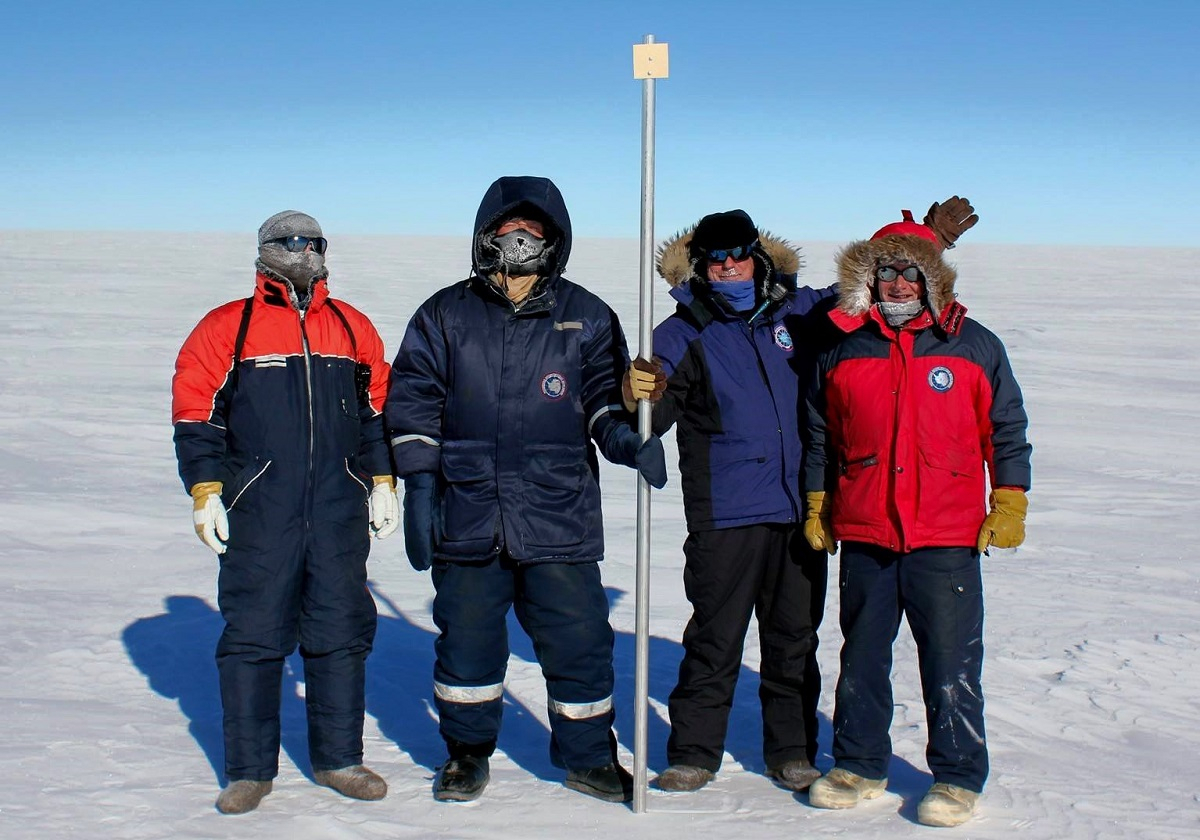The oldest ice on Earth: SPbU scientists

The 63rd Russian Antarctic Expeditionthat brought together the scientists from SPbU, AARI, and Mining University has come to an end. The scientists discovered the oldest ice on the planet that can be over 1.3 million years old.
The research at the Antarctic station Vostok is expected to provide additional confidence in restoring the climate picture of the past and forecasting how conditions on the planet might develop in the future.
The glaciologists - scientists who study glaciers — arrived at Vostok on December 14, 2017. December and January are the most favourable months for research: the Antarctic summer is almost over and it means that the temperature can drop to only - 30 °C, while the temperature in winter (July and August) can be about - 80°C.
“During the expedition, we had two research trips by snowmobiles and covered a distance of 80 km from the station to study the speed of snow accumulation in the Antarctica, — said Candidate of Geography, SPbU Associate Professor Aleksei Ekaikin. — We also drilled two holes 70 and 40 meters in depth to track the climate shifts for the last 2,000 years and studied in depth the isotopic composition and speed of snow accumulation at Vostok. Our overarching priority is therefore to reveal the causes and mechanisms of the climate change and to forecast the changes in the future”.
A real breakthrough is a discovery of the world’s oldest ice buried at the depth of 3.5 km.
Presumably, the ice, as the scientists say, is approximately 1.3 million years old, but it needs to be proved.
The scientists assumed that they could find the oldest ice at Vostok as early as in 1998, said Aleksei Ekaikin, when they drilled the Antarctic ice cover 3,623 meters in depth. The ice core was studied in Russia, France, and USA, and the scientists concluded that the ice buried 3.310 metres in depth was 420 thousand years old. By studying the ice core, the scientists made several conclusions: for example, they revealed a link between temperature and the concentration of carbon dioxide in the atmosphere. However, there must be another a 200-metre segment of ice that had been formed by the precipitations at the depth of 3,310 metres. The ice segment must be of over 400 thousand-years-old, the scientists reckon, but more precise data is impossible to obtain as the natural layers are mixed due to the ice-sheet dynamics.
“Some years ago, my colleague who is the Director of the Laboratory of Climate and Environment Changes at the AARI Vladimir Lipenkov pointed out that the lower ice layers had comparatively huge hydrates of oxygen that are the crystal compounds formed by the water and air bubbles under enormous pressure, — said SPbU Associate Professor. — At that time, we built up a model of how those hydrates of air had grown and revealed that the ice was about 1.5 million years old. The dating was later proved by the independent method that measured the concentration of the cosmogenic isotopes in ice”.
Nowadays, there are several dating methods. If the snow accumulation speed is relatively high (for example, in Greenland), we can identify the number of the annual slices in the glacier. Moreover, we can search for the traces of the events in them that are precisely dated: for example, the products of the volcanic eruptions. The age of the old ice was identified by measuring the concentration of the radioactive cosmogenic isotopes: they are formed in the atmosphere due to the cosmic and solar radiation and then captured together with the air by the ice. Their concentration in the ice decreases in relation to their age. The scientists, to date the age of the newly discovered ice at Vostok, used a new method that measures the size of the hydrates of oxygen.
Today, there is an Antarctic quest to find the oldest ice in the Antarctica among France, Japan, China, and USA. What we are trying to achieve is to solve the mystery of the climate change on the planet. About a million years ago, there was the Mid-Pleistocene Climate Transition when the dominant periodicity of climate cycles changed from 41 thousand to 100 thousand years. The reasons behind the transition have little been studied. Yet the scientists believe that it may have been the concentration of the carbon dioxide in the atmosphere. It is the oldest ice that can help us solve this mystery as it contains the bubbles of the ancient air trapped inside the core.
The current record-holder that is approximately a million years old is the ice core found in McMurdo station in the Antarctica. «The Blue Ice, although it may be the oldest on the planet, is of little, if any, interest to us as the Blue Ice had been close to the surface for a long time and it can eliminate or distort the climate change data”, — said the scientist.
The samples of the oldest ice collected at Vostok during the 63rd Russian Antarctic Expedition will be put into freezing containers on board a vessel “Akademik Fedorov”. In spring, the expedition will return to St Petersburg and deliver a half a ton of the samples to the Laboratory of Climate and Environemtn Changes at the AARI to study the gas and isotopic composition of the ice.

